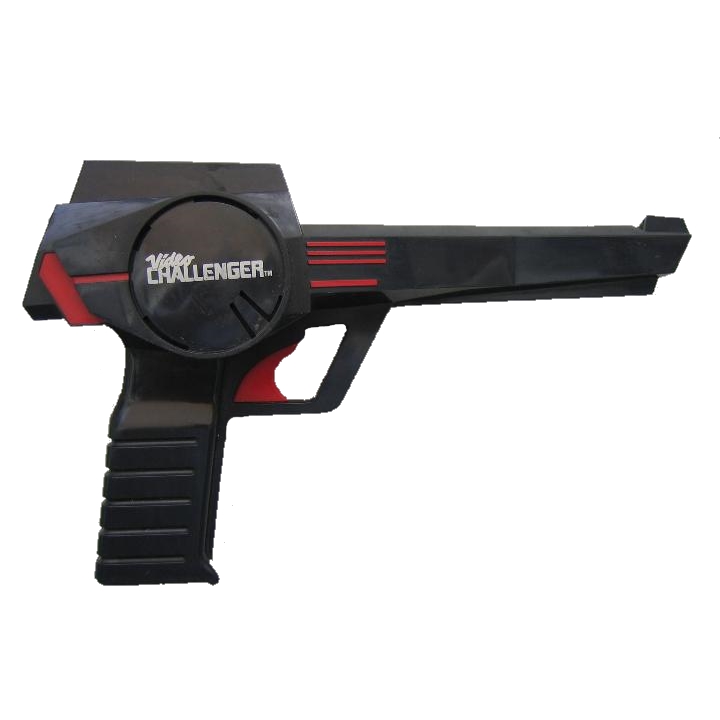|
Early Years
In the 80s, new lines of toys appear of VHS-based system that used VCR as the visual input of the game. The most famous in this category is probably the Action Max released in 1987.
This type of video game console had several advantages over the other of its time. First of all, the console itself was cheaper to produce and therefore was less expensive than the other consoles of the time. The same was true from the “cartridges” which were only VHS tape. They were easy to mass produce and didn’t cost a lot.
The main selling point was the realism of visual content. Theses systems mostly used visual flash to interact with the console. For example, the Video Challenger uses flashes to indicate a part of the scene where you could shoot at. If the muzzle of your gun detected the flash while the trigger was pressed you would earn points, if the trigger was not pressed, you would take damage. Using this system, any video content could be adapted to be a game, which allows the producer to use either hand-drawn cartoon or live action movie sequence. Although today the current generation of gaming systems are able to render movie-like images, this was revolutionary at the time.
Video Challenger
In 1987, a Japaneses company named Select Merchandise created the VHS Based toy called the Video Challenger. The system includes the gun (refer as the Challenge Blaster) and the game Space Challenge. The company decided to sell the right to the console to different company. The console was released by Takara in Japan, Gig in Italia, Bandai in the rest of Europe, and Irwin in Canada. The console was also distributed in the U.S. directly by Select Merchandise (under the “Select” brand), but had a limited release.
The toy was cross-marketed into the anime The Headmasters in which children could fire at the Decepticons in the title sequence (starting with “Explosion on Mars!! Maximus Is in Danger”) and score points in selected episodes. Daniel himself carries a Challenge Blaster in the anime and is sometimes seen playing the game.
With the release of the TurboGrafx-16 and the upcoming 16-bits generation of console, the Video Challenger rapidly became obsolete as the graphical capability of newer consoles became more advance.
Technology
The system is fairly basic as its only able to recognized flashes on the screen. Different flashing pattern will have different effect. When pulling the trigger while the gun detect a “target flash pattern”, points will be added to your score. If the muzzle is facing the damage pattern in the video without pulling the trigger, the score will be penalized. Then, if all targets in one round are successfully hit, player will enter a bonus round, which will double the amount of points. Bonus round ends after a certain period of time.
Games
A total of 8 games were released for the console. The console came pack with a different game depending on the country and production run. All games might not have been available in all countries. For each game below, we have added the countries where games are confirmed to have been published.
- Space Challenge – 1987 – (Japan, Europe, U.S., Canada)
- Thunder Storm (Data East) – (Japan)
- Road Blaster (Data East)- (Japan)
- Godzilla Challenger 1- (Japan)
- Godzilla Challenger 2- (Japan)
- Sky Wars (Select Merchandise Inc.) – 1987- (Japan, Italia, Europe, U.S.)
- After Burner II (Sega) – 1987- (Japan)
- Turtle Challenge (TV House Production for Bandai) – 1988 – (Europe)

